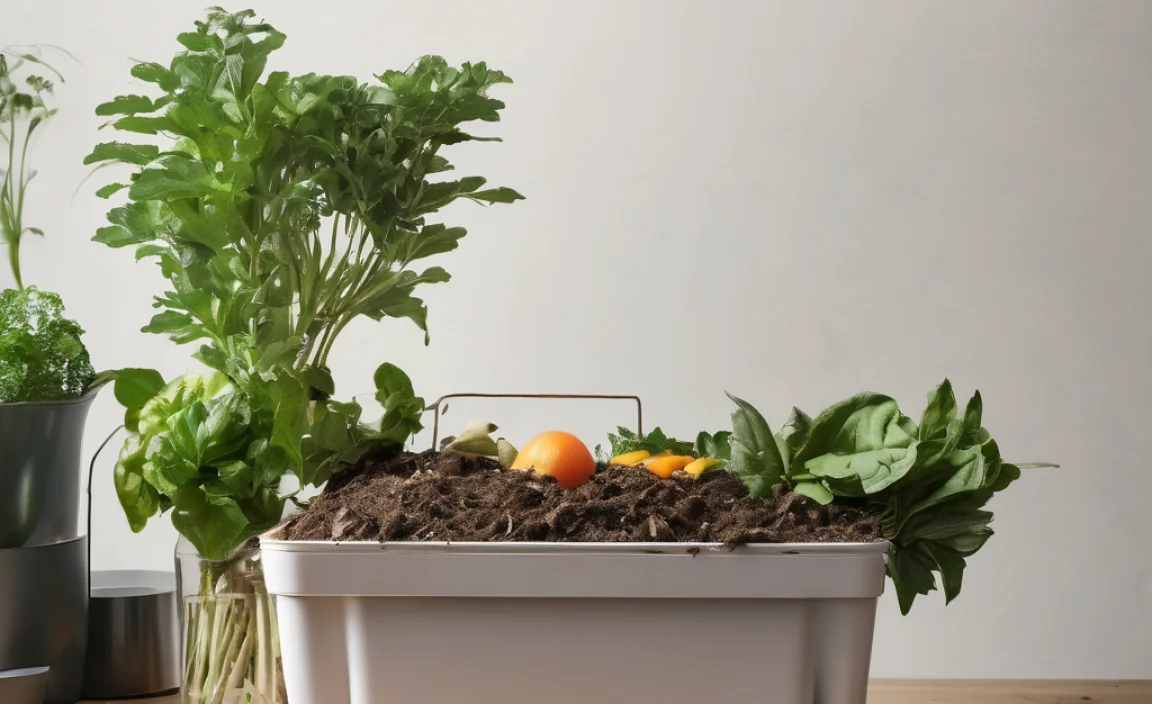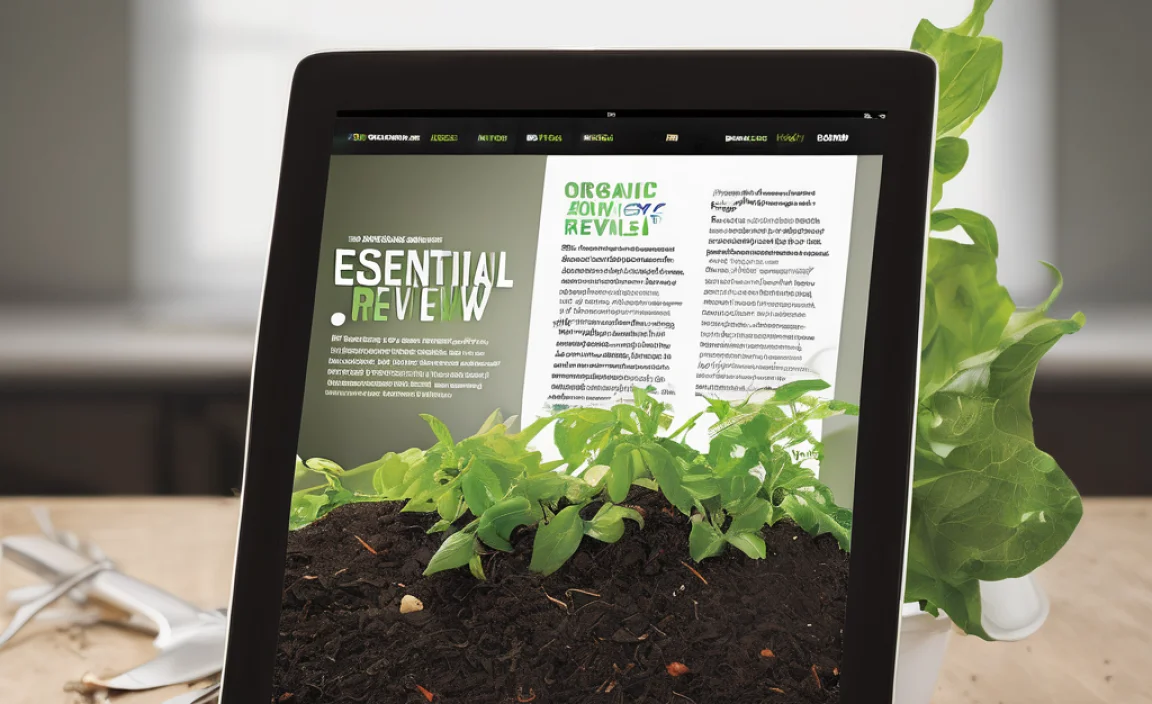Living off the grid or in a rural setting often means rethinking how we handle waste. Traditional flush toilets use a lot of water and need a complex septic system. If that sounds like a hassle, or if you’re looking for a more eco-friendly option, a compost toilet might be your perfect solution. It might sound a little intimidating at first, but it’s actually simpler than you think. We’ll walk through everything you need to know, step-by-step, so you can feel confident about making this choice for your rural home. Get ready to discover a cleaner, greener way to manage waste!
Compost Toilet Rural: Your Essential Guide to a Greener Solution
Hello there! Troy D Harn here, your friendly guide to all things home and garden. If you’re living that rural dream, you know how empowering self-sufficiency can be. But when it comes to managing waste, sometimes the “traditional” ways can be a bit… much. Lots of water, potential for expensive system failures, and the general hassle of it all. That’s where the humble, yet mighty, compost toilet comes in. It’s a fantastic way to reduce your water usage, minimize your environmental footprint, and even create a useful byproduct!
Don’t let the name fool you; “compost toilet” is a bit of a mouthful, but the concept is really straightforward. It’s a system that handles human waste through a process of aerobic decomposition, similar to how your garden compost gets made, but specifically designed to safely break down humanure. This isn’t about digging a hole in the backyard; it’s about utilizing natural processes to turn waste into a valuable soil amendment, all while saving precious water.
Whether you’re building a new cabin, renovating an old farmhouse, or just looking for a smarter way to handle things on your property, a compost toilet can be a game-changer. Think of it as a step up in sustainable living that’s totally achievable. We’re going to break down what makes a compost toilet tick, the different types you can choose from, how to set one up, and the simple maintenance that keeps it all running smoothly. Ready to dive in?
Why Consider a Compost Toilet for Rural Living?
Rural living often offers a sense of freedom and connection to nature. However, it can also present unique challenges when it comes to utilities, especially sanitation. Traditional flush toilets are water-guzzlers, which can be a significant issue if you’re on a well or in an area with water scarcity. Plus, they require either a direct connection to a municipal sewer or a robust septic system, which can be costly to install and maintain. A compost toilet offers a compelling alternative for several reasons:
- Water Conservation: This is huge! Compost toilets use little to no water, drastically reducing your water bill and your reliance on water resources. This is especially important in drought-prone areas or for those looking to live more sustainably.
- Environmental Friendliness: By composting human waste, you’re diverting it from landfills or septic systems where it can contribute to pollution. Properly managed compost toilets return nutrients to the soil in a safe way.
- Reduced Infrastructure Needs: You don’t need a complex plumbing system or a traditional septic tank. This can save a lot of money and hassle, particularly in remote locations or during new construction.
- Off-Grid Capability: For tiny homes, cabins, RVs, or properties far from municipal services, compost toilets are an ideal sanitation solution.
- Nutrient Recycling: The end product of a well-managed compost toilet is a nutrient-rich compost, which can be used to fertilize non-edible plants, trees, and shrubs, creating a closed-loop system.
- Odor Control: Modern designs and proper management techniques mean compost toilets don’t have to smell bad. In fact, when managed correctly, they are often less noticeable than a traditional bathroom.
Understanding How Compost Toilets Work
At its heart, a compost toilet is all about encouraging aerobic decomposition – that’s the process where beneficial microbes break down organic matter with the help of oxygen. Unlike anaerobic decomposition (which happens without oxygen and can cause foul odors), aerobic decomposition is relatively odorless and efficient. Here’s the basic breakdown:
When waste is deposited into the compost toilet, it’s typically mixed with a carbon-rich material, often called “bulking material” or “cover material.” This is usually something like sawdust, coconut coir, peat moss, or wood shavings. This bulking material is key because it:
- Absorbs moisture.
- Covers the waste to help prevent odors.
- Provides carbon for the decomposition process.
- Aids in aeration.
The toilet then separates liquids and solids, or it contains a system for mixing. The solid waste, mixed with the bulking material, starts to break down. Over time, with sufficient airflow and the right balance of “greens” (nitrogen-rich, like the waste itself) and “browns” (carbon-rich, like the bulking material), the solids decompose into a safe, earthy-smelling compost.
There are a few main ways compost toilets achieve this:
Types of Compost Toilets
When you’re looking into compost toilets for your rural home, you’ll find a few main categories, each with its own advantages and complexities. Choosing the right one depends on your budget, how much maintenance you’re willing to do, and your specific needs.
1. Self-Contained Composting Toilets
These are the most basic and often the most affordable. They are essentially a “bucket and a seat.” You deposit waste and add cover material after each use. The solids and liquids are collected in a single container below the seat. Once the container is full, you empty it into a larger composting system (like a dedicated bin or pile) away from your home.
- Pros: Very simple, inexpensive, requires no external power or much water.
- Cons: Requires frequent emptying, can be more hands-on with handling raw waste, potential for odors if not managed perfectly, usually requires a separate composting area.
2. Evaporation-Type Toilets
These systems are designed to evaporate the liquid portion of the waste, leaving the solids to dry out and compost within the unit. They often have a heating element (electric or sometimes passive) to assist with evaporation. The dried solids eventually need to be removed and composted further before disposal or use.
- Pros: Reduces the volume of waste needing to be removed, can be more user-friendly than simple bucket systems.
- Cons: Requires electricity for heating, evaporation rates can vary with humidity and temperature, still requires periodic removal of solids.
3. Urine-Diverting Composting Toilets (UDCTs)
These are arguably the most popular and effective type for modern rural living. UDCTs have a special bowl design that separates urine from feces at the point of deposit. The urine is collected in a separate container or pipe and can be diluted and used as fertilizer (after proper aging and dilution according to safe practices) or disposed of safely. The feces go into a composting chamber within the unit, where they are mixed with cover material and allowed to decompose aerobically.
- Pros: Significantly reduces odor by diverting urine (which is a primary source of ammonia smell), reduces the moisture content in the solids greatly speeding up composting and reducing volume, produces two distinct byproducts that can be managed separately.
- Cons: Typically more expensive initially than self-contained units, requires occasional maintenance of both urine and solid systems, some people find the front-mounted urine diverter feature a bit unusual at first.
4. Central Composting Systems
These systems are more complex and are often used for multiple dwellings or larger facilities. Humanure from several toilets is piped to a central composting chamber or bin system. These require more planning and often more sophisticated management but can handle a larger volume of waste efficiently.
- Pros: Can serve multiple units, potentially more efficient large-scale composting.
- Cons: Higher initial cost and complexity, requires professional design and installation, more involved management.
For most rural homeowners looking for a practical, eco-friendly solution, a well-designed Urine-Diverting Composting Toilet (UDCT) is often the sweet spot. They offer excellent odor control and efficient composting. Many reputable brands offer these in DIY-friendly kits or fully assembled units.
Essential Components of a Compost Toilet System
No matter which type of compost toilet you choose, there are a few core components that make it all work. Understanding these will help you appreciate the system and troubleshoot if anything comes up.
The Toilet Unit Itself
This is the visible part. It can range from a simple bucket with a seat to a more elaborate fixture with built-in separation mechanisms, ventilation fans, and heating elements. For UDCTs, the key feature is the diverter, which guides urine one way and solids another.
Bulking Material/Cover Material
As we discussed, this is crucial. It’s typically a carbon-rich material that you add after each use to absorb moisture, reduce odors, and provide an energy source for the microbes doing the composting. Common choices include:
- Sawdust (from untreated wood)
- Coconut coir (a sustainable peat moss alternative)
- Peat moss
- Shredded leaves or straw
- Wood shavings
It’s important to use a material that is dry and free of herbicides or pesticides.
Collection and Composting Chamber
This is where the magic happens. Solids are collected and begin their decomposition process, ideally in an aerobic environment. For self-contained units, this is the internal bucket. For UDCTs, it’s a separate chamber, often stirred or managed to promote airflow. In more advanced systems, the composting might happen in a separate bin or chamber outside the immediate toilet unit.
Liquid Management System
If you’re using a urine-diverting toilet, you’ll need a way to collect the urine. This could be a dedicated tank, or a pipe leading to an external storage or dispersal system. Remember, urine is high in nitrogen and needs to be handled properly. It should be diluted significantly before being used on plants, or disposed of according to local regulations.
Ventilation
Proper ventilation is absolutely critical for compost toilets. It provides oxygen for the aerobic decomposition process and helps vent any potential odors outside. Most units come with a vent pipe that safely exhausts air from the composting chamber. For active ventilation, some systems use a small, low-power fan.
You can find more information on safe waste management practices from the Environmental Protection Agency (EPA) or your local health department. They often have guidelines specific to your region.
Setting Up Your Compost Toilet: A Step-by-Step Approach
Getting your compost toilet installed is usually a straightforward DIY project. The specific steps will vary slightly depending on the model you choose, but the general process is similar. Always refer to your manufacturer’s instructions for detailed guidance.
Step 1: Choose Your Location
Select a spot for your toilet. This could be inside an existing bathroom, in a dedicated outhouse, or in a small, purpose-built structure. Ensure there is adequate space around it for maintenance and for installing the vent pipe.
Step 2: Prepare the Site
If you’re installing on a concrete floor, you’ll likely just need to secure the unit. If it’s on a wooden floor, make sure it’s well-supported. You’ll need to plan how the vent pipe will exit the building (usually through a wall or roof) and how any liquid effluent will be managed.
Step 3: Assemble the Toilet Unit
Most composting toilets come partially assembled. You’ll likely need to attach the seat, connect the urine diverter (if it’s a UDCT), and install any internal composting mechanisms. Read your manual carefully!
Step 4: Install the Ventilation System
This is a critical step for odor control and proper composting. The vent pipe needs to be securely attached to the toilet’s vent port and run up and out of your building. Ensure it’s properly sealed to prevent leaks and is adequately protected from the weather. For active ventilation, connect the fan to a power source.
A good rule of thumb for vent pipe height is at least 1 foot above the highest point of your roof or any adjacent structure to ensure good draw and prevent backdrafts. You can explore pipe materials and installation techniques at resources like BuildingCodes.com for general guidance on venting, though always check local building codes.
Step 5: Connect Liquid Drainage (for UDCTs)
If you have a urine-diverting toilet, connect the urine outlet to your chosen collection method. This could be a flexible hose leading to a storage tank (which should be vented) or directly to a greywater system if permitted locally and appropriately treated/diluted.
Step 6: Add Your First Layer of Bulking Material
Before you use the toilet for the first time, add a layer of your chosen bulking material (sawdust, coir, etc.) to the solids chamber. This sets you up for success from the very first deposit.
Step 7: Test and Troubleshoot
Once assembled and prepared, do a quick test run. Flush (if your system has a small water flush for the bowl, otherwise just check the diverter function) and ensure everything is flowing as it should. Check around connections for any leaks.
Maintaining Your Compost Toilet: Keeping it Fresh and Functional
Good composting toilet maintenance is key to controlling odors, ensuring efficient decomposition, and making the whole process pleasant. It’s much simpler than you might imagine!
Daily Maintenance: The Bulking Material Routine
This is your most important daily task! After each use, add a scoop or two of your bulking material to the solids chamber. The goal is to cover all fresh feces. This is the most effective way to prevent odors and kickstart the composting process.
Weekly Checks and Stirring
Once a week, or as needed, you’ll want to stir the contents of the solids chamber. This introduces oxygen, which is vital for aerobic decomposition. Many UDT systems have a built-in crank or stirring mechanism. If yours doesn’t, you might need to use a tool to gently aerate the material. Also, check your urine collection system to ensure it’s not blocked.
Monthly/Quarterly: Emptying and Cleaning
The frequency of emptying the solids chamber depends on the size of the chamber and the number of users. For a typical household with a UDCT, you might only need to empty the solids every few weeks to a couple of months. When it’s time:
- Emptying Solids: Safely remove the composted material. It should look dark, crumbly, and smell earthy. If it’s not fully composted (still looks very wet and raw), it needs more time. You’ll typically transfer this material to a dedicated compost bin or pile to finish curing for several months. Remember, the goal is to create safe compost that can be used for non-edible plants only. EPA guidelines on composting human manure are critical here.
- Cleaning the Bowl and Chamber: Give the toilet bowl and the solids chamber a good scrub. Use eco-friendly cleaning products. A solution of water and vinegar is often effective.
- Managing Liquids: Empty the urine collection tank or container as needed. Dilute it (e.g., 10:1 or 15:1 with water) before using it on ornamental plants, or dispose of it according to local by-laws. Never pour raw urine directly into waterways or onto edible gardens.
Annual Checks
At least once a year, you’ll want to do a more thorough check of all components, including the vent pipe for blockages, the fan (if applicable) for proper operation, and seals for degradation.
Troubleshooting Common Compost Toilet Issues
Even with the best intentions, you might run into a few snags. Most are easily fixable with a little understanding:
Issue: Odors
- Cause: Not enough bulking material, too much moisture, insufficient ventilation, anaerobic decomposition.
- Solution: Add more bulking material (cover everything!), ensure the vent is clear and operating, stir the solids more frequently to introduce oxygen. If the urine diversion isn’t working, address that immediately.
Issue: Too Wet
- Cause: Insufficient bulking material, urine diversion not working properly, high humidity.
- Solution: Add more dry bulking material. Check and clean the urine diversion mechanism. Consider a small, solar-powered fan for the vent pipe if humidity is consistently high.
Issue: Solids Not Breaking Down Well
- Cause: Lack of air, too dry, material too coarse, extreme temperatures.
- Solution: Stir more often. Add a little moisture if it’s too dry (a light misting). Ensure the bulking material is a good

I am passionate about home engineering. I specialize in designing, installing, and maintaining heating, ventilation, and air conditioning systems. My goal is to help people stay comfortable in their homes all year long.



